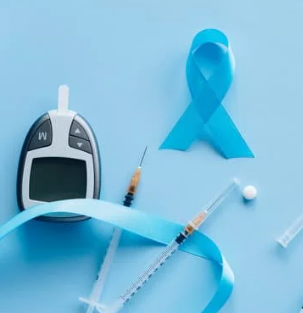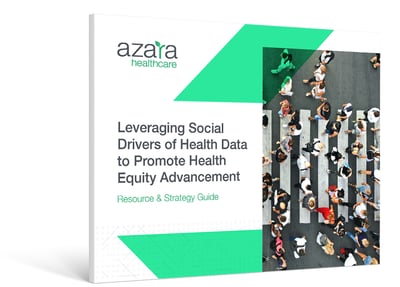Social Drivers of Health (SDOH) are the non-medical factors that impact an individual's health outcomes. The places where people live, work, learn, worship, play and age are shaped by systems of power that contribute to the health disparities we see in communities and populations today.1 It is because of this intrinsic connection between social conditions and health disparities that the National Association of Community Health Centers’ (NACHC) National PRAPARE team set into motion the shift from using the term social determinants of health to social drivers of health.2
Although the change in terminology may seem subtle, the message beneath is pointed. While "social determinants" implies a sense of finality and strips individuals of agency over their own health and well-being, "social drivers" instead advances person-centered language and attributes responsibility to the policymakers driving the health inequities experienced by individuals and communities.3
The Shift Toward Value-Based Care
Primary care providers, particularly safety net providers, have long been responsible for centering patients' social needs in their medical and behavioral health care. Federally Qualified Health Centers (FQHCs) often serve medically complex populations, positioning them to offer wraparound services that extend far beyond the four walls of the practice.4 This level of care requires close connections with local community-based organizations and nonprofit programs that provide social care services and support.4
What is new, however, are the many funding streams available to support screening and referrals related to social care. The healthcare industry’s movement toward a value-based care model is gradually altering the economic equation, incentivizing providers to keep patients healthy rather than collect fees for specific episodes of care.5 A major component of value-based care is proactively identifying the social risk factors and unmet needs that pose upstream barriers to treatment or threaten a patient's ability to engage in their treatment plans.6
Despite the rise in value-based alternative payment models, standardized and integrated approaches to addressing social drivers of health are still relatively new to health centers. Much of the emphasis to date has been placed on screening for social drivers of health. This is largely due to the priorities of players such as the Centers for Medicare & Medicaid Services (CMS) to expand the collection, reporting, and analysis of standardized SDOH data.7 However, as the value-based care landscape matures, we are beginning to see CMS and other agencies such as the National Committee for Quality Assurance (NCQA) and The Joint Commission place increasing emphasis on moving beyond SDOH data collection to incentivizing referrals for enabling services, tracking and closing referrals, and more.8,9,10
Azara's SDOH Evolution
As the role of social care becomes increasingly central to primary care delivery, Azara Healthcare is committed to introducing functionality to support our clients and the patients they serve. Azara first released social drivers of health functionality in 2020 when we introduced mapping for the PRAPARE data elements. The purpose behind this functionality was to support our clients in tracking SDOH screening rates. From there, we built out a registry that summarizes patients’ SDOH documentation. When manipulated and used alongside filters for SDOH triggers and diagnoses, the registry can be used to identify patients with positive SDOH triggers and leveraged by care teams to take action. These tools were designed to support our clients in prioritizing patients for care management and community-based referrals.
We have continued to release functionality that supports social drivers of health delivery from the quality improvement perspective, including tools for identifying patients who are overdue for social needs screenings and dashboards that offer a high-level perspective on screening performance and needs of the population. However, as the healthcare landscape continues to shift and evolve, we are directing more attention to functionality and resources that can support our clients in responding to the social needs identified among their patient populations, not just identifying what those needs are.
Social Drivers Referral Integration
Azara recently partnered with two of the nation's leading social care networks, findhelp and UniteUs, to make it easier for our clients to make referrals to social care services without leaving DRVS. With the click of a button, care teams can identify positive SDOH triggers documented in a patient's chart and refer them to a range of community resources, including housing supports, food banks, education programming, and more.
New Measures
Azara continues to release functionality that goes beyond simply tracking screening rates for SDOH. The Social Drivers of Health Core Criteria Screening measure requires that practices screen for food, housing, transportation, and utilities, as well as one supplemental element. This measure can support practices in assessing the completeness of their social needs screening program while encouraging providers to capture the full scope of a patient's social conditions. When integrated into a practice's operations and workflows, this measure can be used to ensure that care teams are tracking and identifying all upstream barriers, enabling them to place necessary referrals to community-based resources.
Azara also recently released the Social Drivers of Health Assessment Count measure. This measure is designed to help practices track the rate at which SDOH questionnaires and data are being captured at patient visits. While the SDOH Core Criteria Screening measure is patient-based, the SDOH Assessment Count measure is operationally designed and can help practices track the extent to which providers and care teams are prioritizing SDOH screenings in their patient interactions.
Looking ahead, Azara plans to introduce measures that align with the new HEDIS Social Need Screening & Intervention (SNS-E) measures. These measures will help practices track how many patients who were screened for unmet food, housing, or transportation need received a corresponding intervention. These measures, especially when combined with DRVS' social network integrations with UniteUs and findhelp, will support practices in placing and tracking SDOH referrals.
Putting it All Together
Azara recently published a SDOH Resource & Strategy Guide which provides practical guidance on how practices can effectively leverage SDOH data to advance healthy equity priorities in three key steps. This guide includes a helpful checklist to track progress and measure success and includes examples of how organizations have integrated use of DRVS into their workflows to achieve their population health and health equity goals. By following the steps outlined in the guide, practices will be able to successfully identify patients and populations at greatest risk, stratify by SDOH triggers, and engage patients to proactively manage their care—ultimately supporting complex patient populations to move toward reaching their full health potential.
By continuously offering new SDOH tools and functionalities, we are eager to support our clients as they navigate the ever-evolving healthcare landscape, especially as value-based care continues take center stage. Azara is committed to supporting our clients in thinking strategically about building sustainable social drivers of health and health equity programs that include SDOH screening, interventions, and tracking. We look forward to continuing our close collaboration with our practices and partners across the nation and will remain responsive as the landscape evolves.
Want to learn how to effectively leverage Azara DRVS SDOH tools at your practice? Contact solutions@azarahealthcare.com.
Download the Guide: Leveraging Social Drivers of Health Data to Promote Health Equity Advancement
- 1https://www.who.int/health-topics/social-determinants-of-health#tab=tab_1
- 2https://prapare.org/using-clear-terms-to-advance-health-equity-social-drivers-vs-social-determinants/
- 3https://prapare.org/using-clear-terms-to-advance-health-equity-social-drivers-vs-social-determinants/
- 4https://company.findhelp.com/blog/2022/07/14/fqhcs-social-care-new-special-pricing-for-industry-leading-sdoh-technology/
- 5https://www.cpca.org/CPCA/HEALTH_CENTER_RESOURCES/Value_Based_Care/CHC_Vignettes/Innovations_in_SDOH_at_California_CHCs.aspx
- 6https://hcttf.org/value-and-sdoh/#:~:text=VBP%20encourages%20and%20incents%20providers,threat%20to%20an%20individual's%20health
- 7https://www.cms.gov/files/document/cms-framework-health-equity.pdf
- 8https://www.ncqa.org/wp-content/uploads/2022/02/04.-SNS-E.pdf
- 9https://www.precisionallaccess.com/ramping-up-sdoh-quality-measures-within-value-based-reimbursement-roadmaps/
- 10https://d31hzlhk6di2h5.cloudfront.net/20221214/5e/6f/01/50/bf4300f0ff9ff1c90a6e0868/5x5z2k__;!!LQC6Cpwp!vkB4FL9imblFI4uxsh7_UdXPR9TNivb4x63Q5W3KuUcPvbKR9PGnAlh14KKCPSkXL9UScKQ5k1Ez-s4LS9JN
Related Articles

Automation, Access, and Alignment: What 2026 Has in Store for Population Health
Explore Insights
Value-Based Care Foundations Part 2: A New Chapter in Risk Adjustment
Explore Insights

